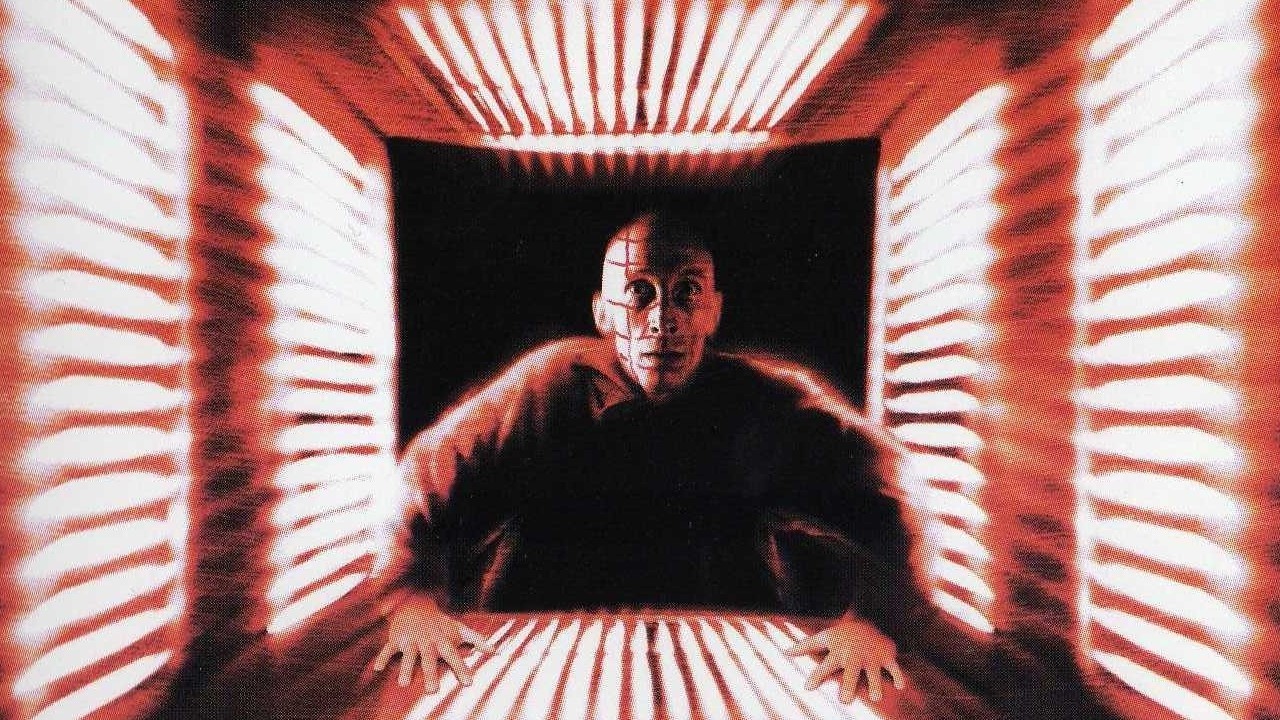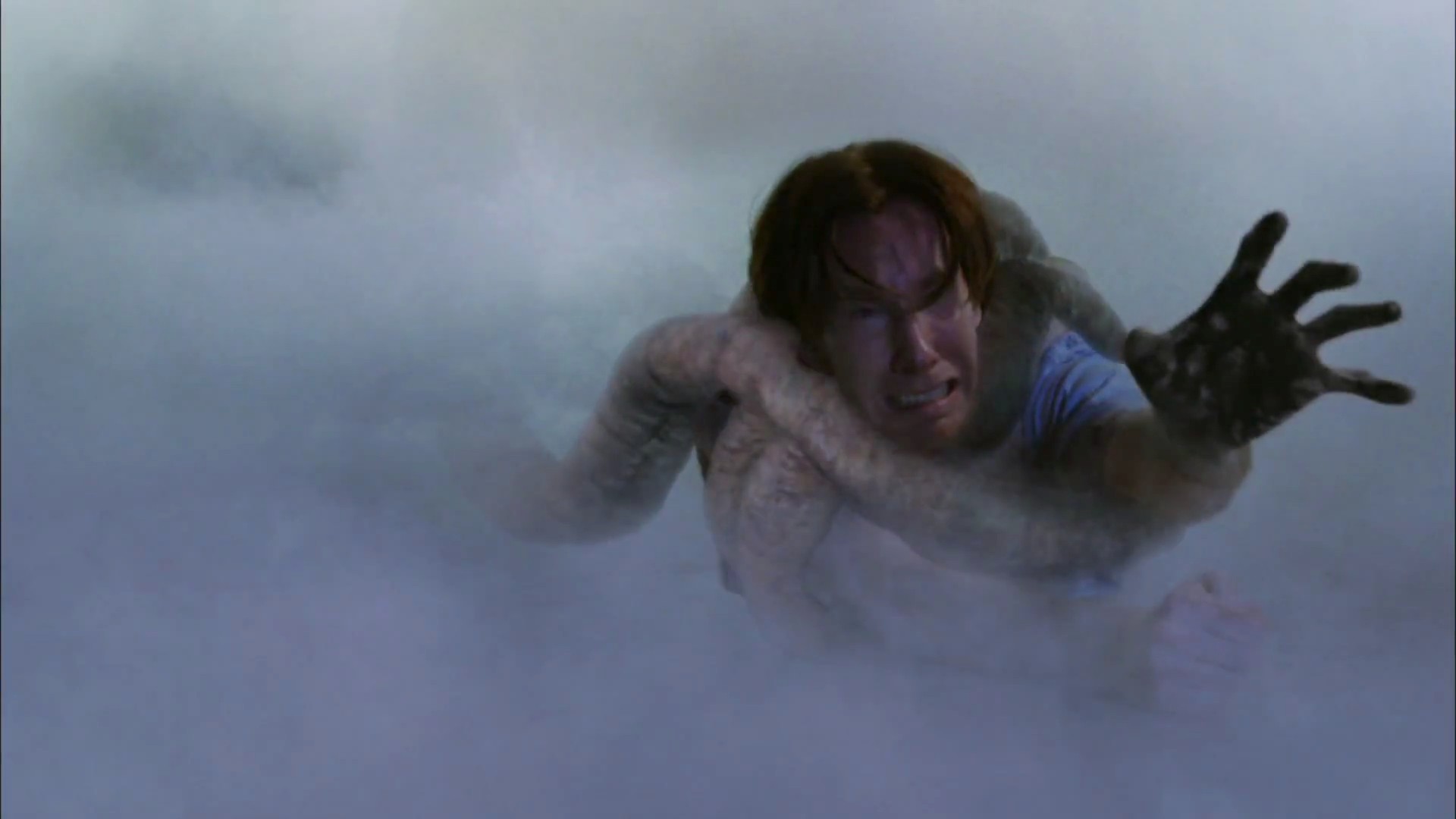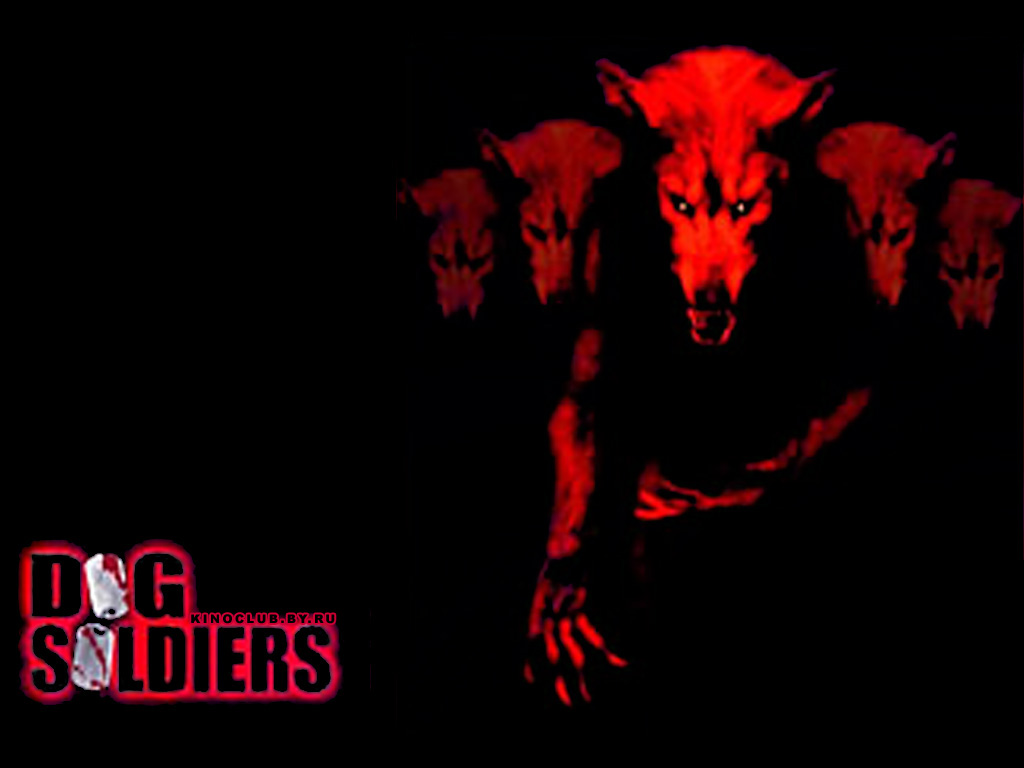Zombie films are legion, easily becoming the go-to monster of our generation. Part of the draw is that the horde can represent almost anything, like a modern tech-addicted population that’s lost touch with the living world. But do these dangerous, mindless beasts need to be dead already? Because living things seem to move a lot faster, and contamination is contamination, whether your brain is literally eaten or just taken from you.
Here’s our salute to all the not-quite-zombie movies out there!
5. Splinter (2008)
Road kill, a carjacking, an abandoned gas station, some quills – it doesn’t take much for first time feature filmmaker and longtime visual effects master Toby Wilkins to get under your skin. One cute couple just kind of wants to camp in Oklahoma’s ancient forest (which can never be a good idea, really). Too bad a couple of ne’er-do-wells needs their car. Then a flat (what was that – a porcupine? No!!) sends them to that creepy gas station, and all hell breaks loose.
Contamination gymnastics call to mind the great John Carpenter flick The Thing, but Splinter is its own animal. Characters have depth and arcs, the danger is palpable, the kills pretty amazing, and the overall aesthetic of that old highway gives everything a desperately lonesome quality where you believe anything could happen and no rescue is in sight.
4. Slither (2006)
Writer/director James Gunn took the best parts of B-movie Night of the Creeps and Cronenberg’s They Came from Within, mashing the pieces into the exquisitely funny, gross, and terrifying Slither.
A Troma alum with writing credits ranging from Scooby-Do movies to the remake of Dawn of the Dead, Gunn possessed all the raw materials to pull it off. The film is equal parts silly and smart, grotesque and endearing, original and homage. More importantly, it’s just plain awesome.
Cutie pie Starla (Elizabeth Banks) is having some marital problems. Her husband Grant (the great horror actor Michael Rooker) is at the epicenter of an alien invasion. Smalltown sheriff Bill Pardy (every nerd girls’ imaginary boyfriend, Nathan Fillion) tries to set things straight as a giant mucous ball, a balloonlike womb-woman, a squid monster, projectile vomit, zombies, and loads and loads of slugs keep the action really hopping.
Consistently funny, cleverly written, well-paced, tense and scary and gross – Slither has it all. Watch it. Do it!
3. The Crazies (1973/2010)
Just three years after Night of the Living Dead, the master found himself interested in taking his zombiism concepts in a different direction.
Two combat veterans are at the center of the film, in which a chemical weapon is accidentally leaked into the water supply to a Pennsylvania town. Military incompetence, the needless horror of Vietnam, and the evil that men can do when ordered to do so are all central conceits in this film.
Romero may not have always had the biggest budget, best actors, or the keenest eye for composition, but his ideas were so ahead of their time that modern horror would not exist in its current form without him. You can see Romero’s ideas and images from this film repeated in 28 Days Later, Return of the Living Dead, The Signal, Cabin Fever, Super 8, even Rambo – and, obviously, in the remake.
Breck Eisner’s 2010 reboot offers solid scares, inventive plotting, and far better performances.
Building a cumulative sense of entrapment and dread, the film relies on a storyline whisper-close to the overplayed zombie tale, but deviates in a powerful way. The slight alteration plumbs a different kind of terror, and Eisner’s sense of timing provides a fine balance between fear of the unknown and horror of the inevitable.
2. The Thing (1982)
John Carpenter’s remake of the 1951 SciFi flick The Thing from Another World is both reverent and barrier-breaking, limiting the original’s Cold War themes, and concocting a thoroughly spectacular tale of icy isolation, contamination and mutation.
A beard-tastic cast portrays a team of scientists on expedition in the Arctic who take in a dog. The dog is not a dog, though. Not really. And soon, in an isolated wasteland with barely enough interior room to hold all the facial hair, folks are getting jumpy because there’s no knowing who’s not really himself anymore.
This is an amped up body snatcher movie benefitting from some of Carpenter’s most cinema-fluent and crafty direction: wide shots when we need to see the vastness of the unruly wilds; tight shots to remind us of the close quarters with parasitic death inside.
The story remains taut beginning to end, and there’s rarely any telling just who is and who is not infected by the last reel. You’re as baffled and confined as the scientists.
1. 28 Days Later (2002)
Prior to 28 Days Later, the zombie genre seemed finally dead and gone. But he single handedly resurrected the genre with two new(ish) ideas: 1) they weren’t dead, 2) therefore, they could move really quickly.
You know you’re in trouble from the genius opening sequence: vulnerability, tension, bewilderment, rage and blood – it marks a frantic and terrifying not-zombie film. They were not dead, you see, just super pissed off.
Danny Boyle uses plenty of ideas Romero introduced, pulling loads of images from The Crazies and Day of the Dead, in particular (as well as Adrian Lyne’s Jacob’s Ladder). But he revolutionized the genre – sparking the rebirth of zombie movies – with just a handful of terrifying tweaks. Boyle paints a terrifyingly realistic vision of an apocalypse we could really bring on ourselves.
Listen to the podcast HERE.









